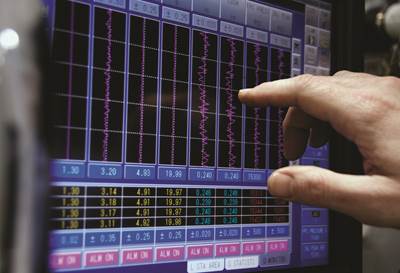Using Decompression to Your Advantage—Your Questions Answered
Since the article on decompression has been published, I have received a few questions that I wanted to share with everyone.
In the August issue of Plastics Technology, I tackled the concept of decompression and how molders can use it to their advantage. Many of you replied with questions, here I’ll provide some answers.
Question: Fabian a plastics engineer asked, "What exactly is the throw of the check ring?”
Answer: The throw of the check ring is the distance that the check ring itself is able to travel. With the check ring in the forward position, it is the distance from the back of the check ring to the contact surface of the rear seat.
Question: Stan a process technician asked, “Doesn’t decompression cause splay?”
Answer: Yes, it can contribute to adding air into your shot. A well-vented mold should be able to compensate for this. Decompression is important enough to a repeatable cushion that it is worth it.
Question: Henry a process engineer asked, “How do I set decompression if my machine is set up in volume?”
Answer: Decompression is a linear distance of travel. If your machine’s unit of measure is volumetric, you will either need to do that math or switch the machine over to mm or inches to set the decompression.
Question: Carlos a professor of plastics at the University of Buenos Aires asked, “You state that when using post rotation decompression, some air could accumulate in front of the screw. Where does it come from?”
Answer: Air can be pulled into the barrel; I like to think of it as a vacuum. As we suck the screw back, a sort of vacuum can be created in front of the screw. This can pull air in from a poorly seated nozzle tip, weep holes, or a vent in the barrel to name a few places. Air can be introduced in several ways but keep in mind, it is also already in the melt. Air is taken in as the pellets enter the feed throat. Decompression can separate the air from the melt, causing it to accumulate in front of the screw.
Volume vs. Linear
On a side note: I know it is popular to say that a machine should be set in volume, especially if you are moving a mold from machine to machine. Many experts in our industry will say that volume is the unit of measure to use and is more scientific than linear distances. I am not one of them.
The main reason I don’t necessarily agree with this is due to the cushion. When I refer to cushion, I am referring to the furthest most forward position of the screw during injection and hold. Some machines may have this labeled as maximum or maybe even minimum cushion. Either way, it is strictly a linear distance and unless your ready to do the math, it is best to have this output reading in linear distance travel, mm or inches. Unfortunately, machine manufacturers don’t allow us to pick and chose which outputs we want in volume and which we want in linear distance. Cushion is a critical output of your process and it is important to understand exactly how far away you are from bottoming out the screw. It is also important it remains constant from shot to shot. Now you may be able to calculate using Pi in fractions of a second in your head to verify the cushion is sufficient, I for one just prefer to look at the number on the screen.
Related Content
Back to Basics on Mold Venting (Part 2: Shape, Dimensions, Details)
Here’s how to get the most out of your stationary mold vents.
Read MoreHow to Reduce Sinks in Injection Molding
Modifications to the common core pin can be a simple solution, but don’t expect all resins to behave the same. Gas assist is also worth a try.
Read MoreHow to Select the Right Tool Steel for Mold Cavities
With cavity steel or alloy selection there are many variables that can dictate the best option.
Read MoreGot Streaks or Black Specs? Here’s How to Find and Fix Them
Determining the source of streaking or contamination in your molded parts is a critical step in perfecting your purging procedures ultimately saving you time and money.
Read MoreRead Next
The 'Butterfly Effect' in Injection Molding—A Connected Process
In injection molding, a seemingly minor change in a setpoint can have a significant impact on part quality and process robustness and repeatability. That’s why Scientific Molding focuses on process outputs, not setpoints.
Read MoreUnderstanding—and Using—Decompression to Your Advantage
Decompression—aka suckback—is a very important setting on an injection molding machine. On today’s machines, molders typically get the option to set decompression before and after screw rotation/recovery. Are they using this feature to their advantage?
Read MoreInjection Molding: Is There a ‘Most-Important’ Process Parameter?
A case can be made for multiple variables—fill balance, fill time, injection pressure, cavity pressure—as most important. But there is something else altogether that is essential to successful injection molding.
Read More

























